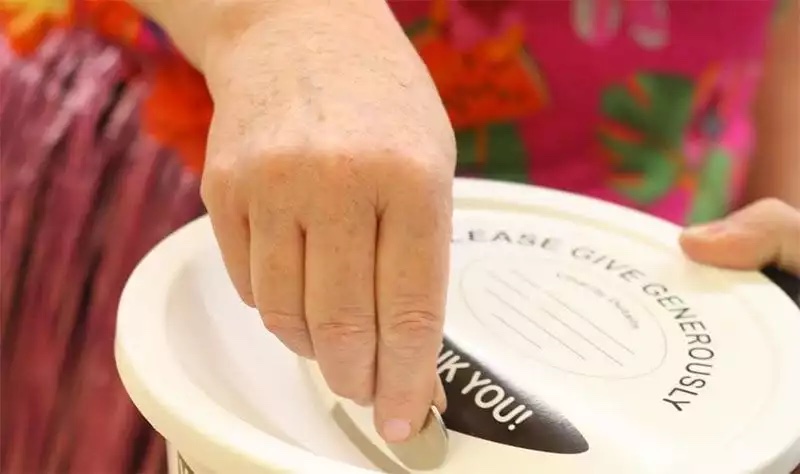Investing in contactless fundraising can be expensive, but can you afford not to?
I’ve been passionately advocating contactless fundraising for some years now. Now, at a time when the sector needs to be considering how it finds new and alternative ways to raise funds, I want to share my thoughts on the matter.
We all know that technology is rapidly advancing and that the user behaviours of younger audiences are different from previous generations. The fundraising landscape has shifted – and we need to adapt.
So what is the fundraising landscape?
• The age of jangling coins in our pockets is coming to an end
73% of charities are saying that street giving is falling simply because people do not carry enough cash, so investing in digital solutions seems the inevitable way forward.
• And contactless usage is rapidly growing
Last year contactless payment adoption increase threefold — with people in the UK tapping over 3 billion times and spending £25 billion through contactless payments.
• So are charities ready to adopt contactless?
Only 14% of charities say they are well prepared to take advantage of contactless payments.
• But we do recognise the need to invest in contactless
50% of charities are actively exploring investment in new ways for their supporters to donate.
• We understand the benefits, so can we afford it?
56% of charities said they have not adopted the tech because of the cost required to buy the equipment.
• …But can we afford not to?
Purchased devices produced an overall ROI of 340%, rentals produced an overall ROI of 212%, and purpose-built devices proved the best overall ROI at 1,384%.
Advertisement

We’re all having the same conversations
Over the past year I’ve talked to many charities about their contactless fundraising journey. I’ve also spoken at conferences and the conversation is the same. As a whole, the sector recognises the need to explore how contactless giving can work for them, but there is still an understandable nervousness around the risk of investing in expensive new technology. We know the charity sector faces a lot of spending scrutiny—both internally and externally—so having strong ROI cases can help to justify the cost of investment.
However as contactless fundraising campaigns have started to appear, they’ve had various levels of success. Some of the less successful trials can paint a bleak ROI picture for anyone looking to run their own campaign. I strongly believe that these campaigns can be fruitful, but there are clear learnings we should be reacting to.
I will take you through some of the things that have stood out for me.
What do we know about contactless?
First you may have tried using contactless already and not had much luck. Don’t let that put you off. Contactless transactions are steadily growing year-on-year, which shows people are becoming more accustomed to paying with their card or smartphone.
So the chances are, even if you ran the exact same campaign or trial again, it may well perform better purely due to greater understanding of contactless.
Whilst the UK is ahead of most other European countries in adopting this technology, there are still fundamental differences in mentalities when donating via cash payments or online versus contactless.
With cash donations, when emptying their pockets, people might not even count how much they are donating – making it feel like the money has no value to the donor. With contactless donations, donors are presented with a very clear amount to donate. Subconsciously they may place a greater focus on the same value and start to question it asking, “Could I buy a coffee for that much?” or “Do I really want to pay that much?”.
Whilst this is obviously not the case for everyone, it is clear the psychology behind cash and contactless donation is different. But this will change as tapping a card or smartphone becomes even more commonplace with every day that passes.
We don’t as yet have years of behavioural studies on the use of contactless like we do with online donations — in which we know that positioning the higher value donation on the left increases average spend, or designing shorter forms increases conversion for example.
We don’t have as much knowledge on user behaviours for contactless yet to really maximise this solution. However we are rapidly learning and best practices are starting to emerge.

The reference I always share is the spiral unit where a coin would go round and round until into drops into the collection bucket. I’m always donating to these when I spot them (with or without my kids) as I unashamedly love watching that coin spin! I rarely look at the charity it’s for, but just donate for my own amusement.
So can we create that level of reward back to the donor in contactless giving? Of course we can.

Contactless technology allows us to trigger a reaction of some sort as soon as the tap is made, and it’s just down to our imagination and creativity as to what that reaction can be. In our studio, we’ve discussed everything from activating a thank-you video to firing a paintball cannon; from turning on a wind machine to seeing your name up in lights at Piccadilly Circus. Once you understand that the tap is just a switch to turn something on, the opportunities are endless. We’ve seen with some of our work that this sort of engagement, as well as generating some PR buzz, can have audiences literally queuing up to tap.
Something companies are wanting, is a way to collect data as part of a contactless journey. Currently this quick tap and go approach doesn’t lend itself to this collection which can provide a stumbling block.
One option to combat this is to look into suppliers who are providing Gift Aid capability to contactless donations. By signing up to their system, data is collected as part of the GiftAid process.
I’m a strong believer that, in order to ask for someone’s data, you need to create a sense of value in providing it and make them want to hand it over. For example, we’ve been exploring options with our clients around having the donors name appear in lights, or even on the big screen during sporting or music events. Giving the audience their moment of fame makes entering their details much more desirable.
Ok it sounds great, but I don’t have the budget for that
Yes, contactless activations can be costly, but done right, they can be a great return on investment. I’ve met many charities and spoken to fundraising, marketing, brand, innovation, tech/IT and PR teams all looking at how contactless fits their objectives.
A common sticking point is, from these, who should take ownership of contactless fundraising? The answer should be ‘all of the above’, you may need a contactless ambassador to co-ordinate teams but the project itself shouldn’t sit with one department.
It is likely that a fully-integrated contactless activation will touch on multiple teams’ objectives, so it should really be a collaborative project. One benefit of a multi-teamed project is the ability to pool resources and funds from each team’s budget. Contactless can be expensive, but just dipping your toe in won’t get you the results you are after.
You need to invest in the right level of engagement, build it into you campaigns and plan enough comms space to give it the attention it deserves. It’s true when they say the more you put into it, the more you’ll get out of it.
“The key to meeting and exceeding fundraising targets in to innovate, plan and invest. Fundraising success is possible, but it very rarely comes out of the blue. The charities that are doing well are the ones that are more likely to say that they have the right people, skills and tech to take forward their strategies, as well as trying new and different things. But we also should be careful to not only see fundraising success through hitting of a financial target — the experience that charities give supporters has to be looked at alongside a financial return on investment.”
Daniel Fluskey – Head of Policy and External Affairs – Institute of Fundraising
Our tips for successful contactless giving
• Keep ideas relevant, no gimmicks
You’re going to see lots of gimmicks, but the ideas that work will be ones that actually solve problems.
• Get everyone onboard
Getting your whole organisation actively behind contactless helps tick all the boxes of a successful contactless project.
• You need to talk about it
A great idea is one thing, but how to promote it to and engage audiences is crucial.
• Reward and delight audiences
Giving audience that moment of delight for donating will be key to creating more successful experiences.
• See the ‘tap’ as a key to open a creative door
Tapping can trigger anything from flashing lights to firing a paintball gun.

Dan Ridge is Campaign Director at Bond & Coyne, a creative agency with a wealth of innovative experience in the charity and education sectors. Dan helps bring campaigns to life by harnessing the opportunities made possible by emerging technologies to grab the attention of target audiences. You can view the agency’s contactless case studies. If you’d like to discuss any of this further, he’d be more than happy to meet up to have an open conversation and advise where he can. You can drop him a line at da*@*************co.uk.





